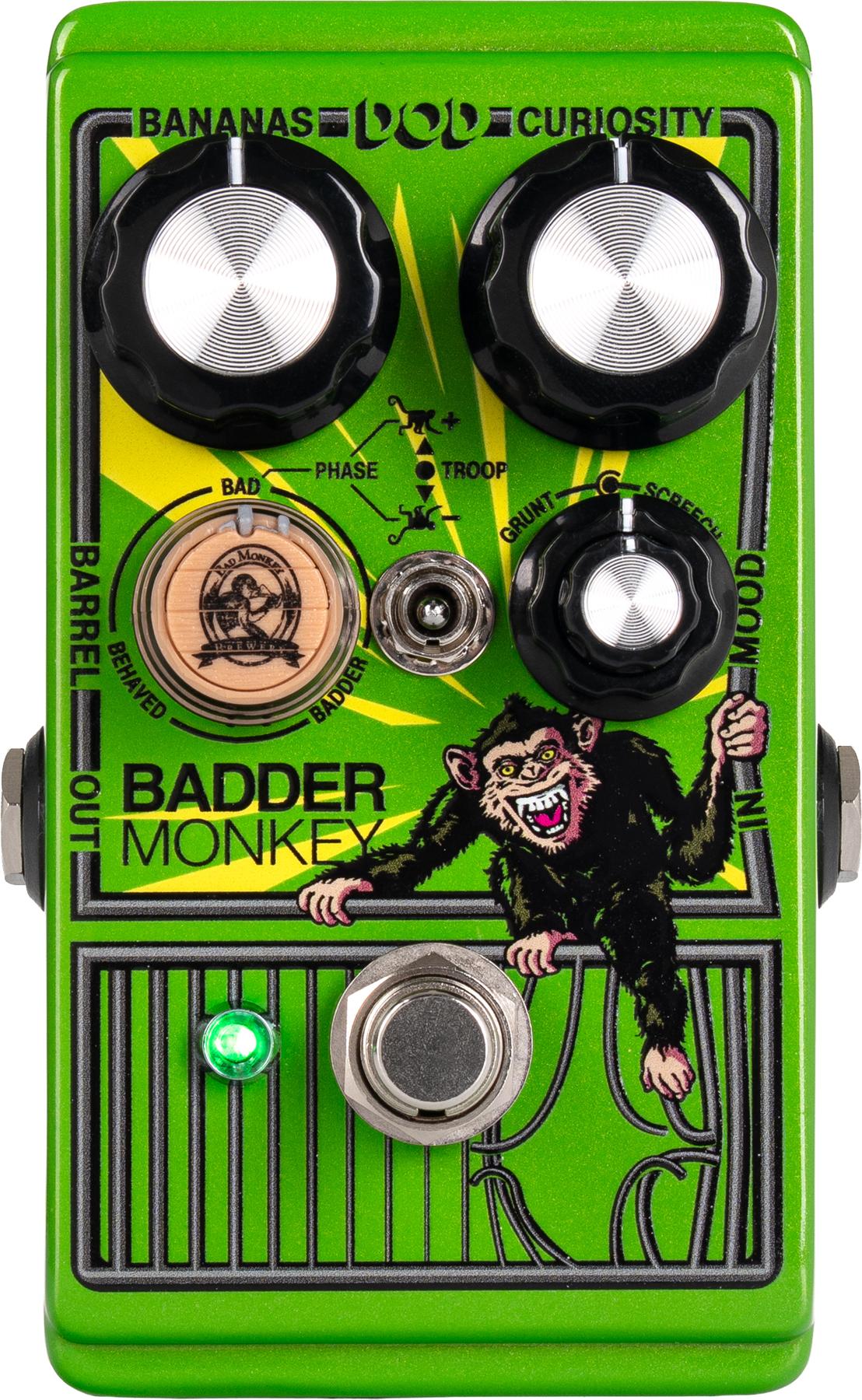| Breedlove Mark I Electric Guitar Best known for innovative handmade acoustic guitars, mandolins and basses, Breedlove Guitar Company introduces the Mark Series. The Mark I has a modern profile based on Breedlove’s award-winning CM design, and is built with highly-figured tonewoods. An asymmetrically chambered body gives the Mark I a lively resonance and a lightweight feel. The Mark I can be completely customized with a selection of tonewoods, finishes, custom inlays and electronics options. MSRP $5,599 breedloveguitars.com |  |
| Avatar Vintage 212 Cab Styled after the famous Bluesbreaker 212 cab from the ‘60s, this Avatar cab has a variety of features. Available with a closed back or split two-piece back, the cabinet is covered in black tolex and wheat-colored grille fabric. The two 12s are rear loaded with T-Nuts, making it easy to swap out speakers for tone experimentation. Cabs are custom assembled with your choice of speakers, from a wide array of Celestion and Eminence speakers. Starting at $358 avatarspeakers.com |
| BG Pups P.U.F. Humbucker Set The P.U.F. is modeled off the classic PAF tone, but features all the tonal benefits of a handwound pickup. The most vintage-sounding set available from BG Pups, the neck is warm with nice bloom, and offers excellent clean and creamy lead tones. The bridge has a classic crunch with lots of definition and cuts nicely through a mix. Both pickups are very pick-sensitive and have a versatile dynamic range. This set is wired with single conductor vintage braided wire, uses an A4 magnet and is unpotted (it can be potted on request). Chrome cover is optional. $75.99 each (uncovered) $139.99 calibrated set (uncovered) norcalguitars.com |  |
 | Headstrong Verbrovibe Amp The Verbrovibe Amp is the world’s first exact replica of the 1963 Brown Vibroverb. Heyboer transformers have been custom made using original data sheets. Speakers have been custom built to closely match the tone of the original Oxfords. Features include 35 watts of tube tone through two 10” ceramic speakers, tube driven spring reverb and bias vary tremolo, solid pine finger jointed cabs, period correct tolex and grill cloth, solid steel chassis and an external bias pot. MSRP $2800 headstrongamps.com |
| T-Rex Viper This unique-looking pedal takes the original swirling vibe sound and gives it an extra bite. Made with high-quality components, the Viper will give your guitar a dynamic, vivid tone. Features Depth, Speed and overall Level, with a Mode setting that moves the Viper from rotating speaker effect to a vibrato. A trimmer control on the underside of the pedal allows you to tune the phase and intensity of the effect. Comes with a two-year warranty. MSRP $499 t-rex-engineering.com |  |
 | Port City Amps Twelve Combo The idea for the Port City Twelve amplifier was simple: create a lower wattage amp that is simple yet classy. Producing 12 watts, it uses two 6V6 Electro-Harmonix power tubes and two 12AX7 JJ Electronic preamp tubes. The Twelve is handwired using the best components, featuring a solid pine cabinet, U.S.- made transformers and Sprague and Mojo capacitors. The amp also comes with a Mojo BV-25M speaker. MSRP $899 portcityamps.com |
| Behringer Guitar Link UCG102 USB Interface The Guitar Link UCG102 interface is a practice tool that lets you hook up your guitar to your computer quickly and seamlessly. The interface allows you to jam and record using modeling amps and effects, without the need for any other gear. The compact device links your electric guitar to a PC or Mac, allowing you to utilize sophisticated software such as the included Guitar Combos Behringer Edition from Native Instruments, Kristal Audio Engine multi-track sequencer and Audacity audio editor. It also features a headphone output for silent practicing. MSRP $49.99 behringer.com |  |
 | Motion Sound SRV-212 Rotary Speakers Motion Sound introduces the SRV-212 rotary satellite guitar speakers. The SRV’s single vertical rotor provides a liquid “360 degree” sound experience that only a real mechanical rotor can produce. Features include a front panel adjustment of slow speed, fast speed, and transition time. A removable cord LED fast/slow/stop footswitch provides convenient control. The auto stop feature positions the rotor facing forward for consistent “non-rotary” sound. Two built-in microphones connect to left and right XLR outputs for convenient PA sending. MSRP $899 motion-sound.com |
| Tokai SC-2C Carved Top Guitar Tokai will be releasing five all-new models in 2007 to celebrate their 60th year of business. Manufactured by hand, this flagship model features an original single-cutaway design, a African mahogany body, and a quartersawn African mahogany neck. The SC-2C also features a Tone Pros AVR-II bridge and handwound humbuckers. This model is available in a variety of colors, including Goldtop, See-Through Red, Violin, Cherry Sunburst and Tobacco Sunburst. Starting at $1320 godlyke.com |  |










![Rig Rundown: Russian Circles’ Mike Sullivan [2025]](https://www.premierguitar.com/media-library/youtube.jpg?id=62303631&width=1245&height=700&quality=70&coordinates=0%2C0%2C0%2C0)









